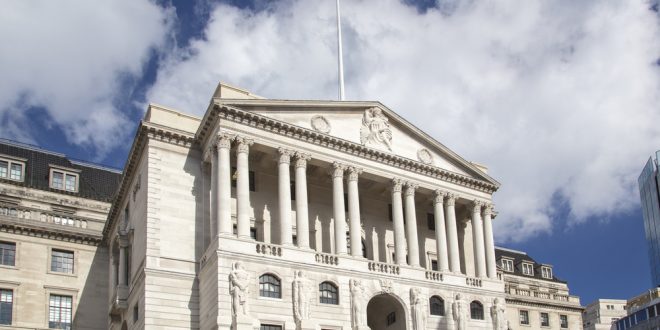The Bank of England (BoE) decided to maintain the record low-interest rates during its monetary policy meeting on Thursday.
The benchmark interest rate was maintained at its all-time low level of 0.1%.
BoE also revised upwards its expectations for economic growth in the United Kingdom (UK) this year, as the British economy recovers from the negative impacts of the coronavirus pandemic.
In addition, the total size of the massive bond-buying program remains unchanged at GBP 895 billion.
Although the central bank is not giving up its monetary easing, it is cutting back the level of its weekly bond purchases to GBP 3.4 billion, compared with the current pace of GBP 4.4 billion.
“The expected completion point of the purchase program remained unchanged. This operational decision should not be interpreted as a change in the stance of monetary policy,” the BoE explained.
Nonetheless, the BoE chief economist, Andy Haldane, who is leaving his post this summer, was the only member of the monetary policy committee to reduce bond purchases by GBP 50 billion.
The BoE now projects the British economy will record a growth rate of 7.25% in 2021, compared with its previous estimate of a 5% growth rate, which it forecasted in February.
Accordingly, growth expectations for 2022 have been revised to 5.75% from 7.25%.
Revising the growth expectations comes as economic data show recovery is progressing better than previously expected, with a return to the pre-pandemic economy size now expected to take place in Q4 of 2021, versus previous expectations of Q1 in 2022.
Meanwhile, the BoE expects the unemployment rate to reach a peak of 5.5% during the third quarter (Q3) of the year.
Expectations for the consumer price index (CPI), the inflation rate, is at 1.93% for the next three years.
Andrew Bailey, Governor of the BoE, believes the economy is showing positive signs and recovering at a pace better than previously expected, as he expressed in a press conference following the meeting.
However, Bailey called for not getting carried away, saying that “it takes us back by the end of this year to the level of output that we had essentially at the end of 2019 pre-COVID.”
 Noor Trends News, Technical Analysis, Educational Tools and Recommendations
Noor Trends News, Technical Analysis, Educational Tools and Recommendations





